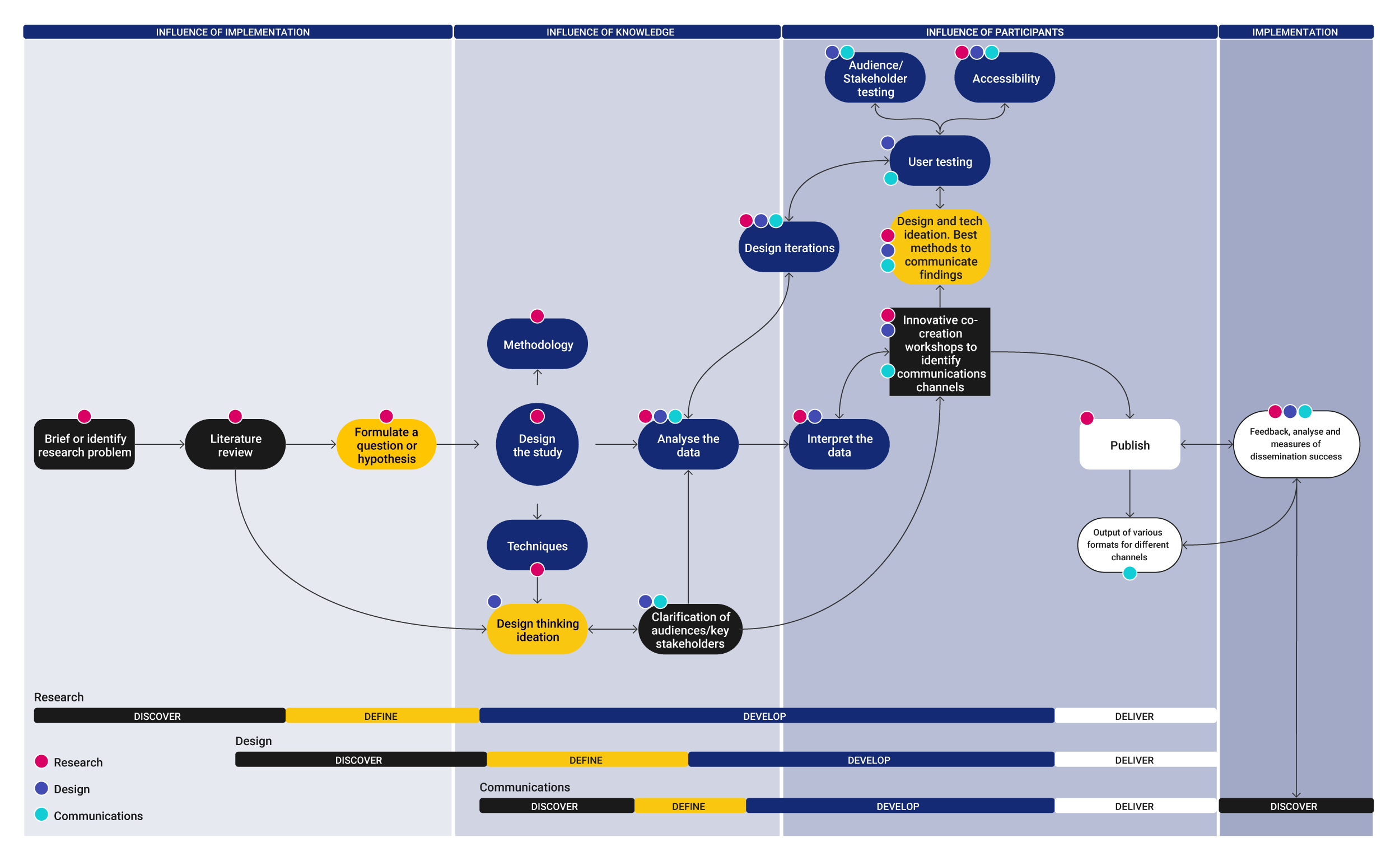#RESEARCH
How can researchers utilise design thinking to innovate dissemination and increase engagement?
Aim
Exploring the benefits, challenges and opportunities of design thinking in research dissemination to increase engagement for stakeholders and audiences, potentially transforming research findings into accessible, user-focused, innovative design solutions.
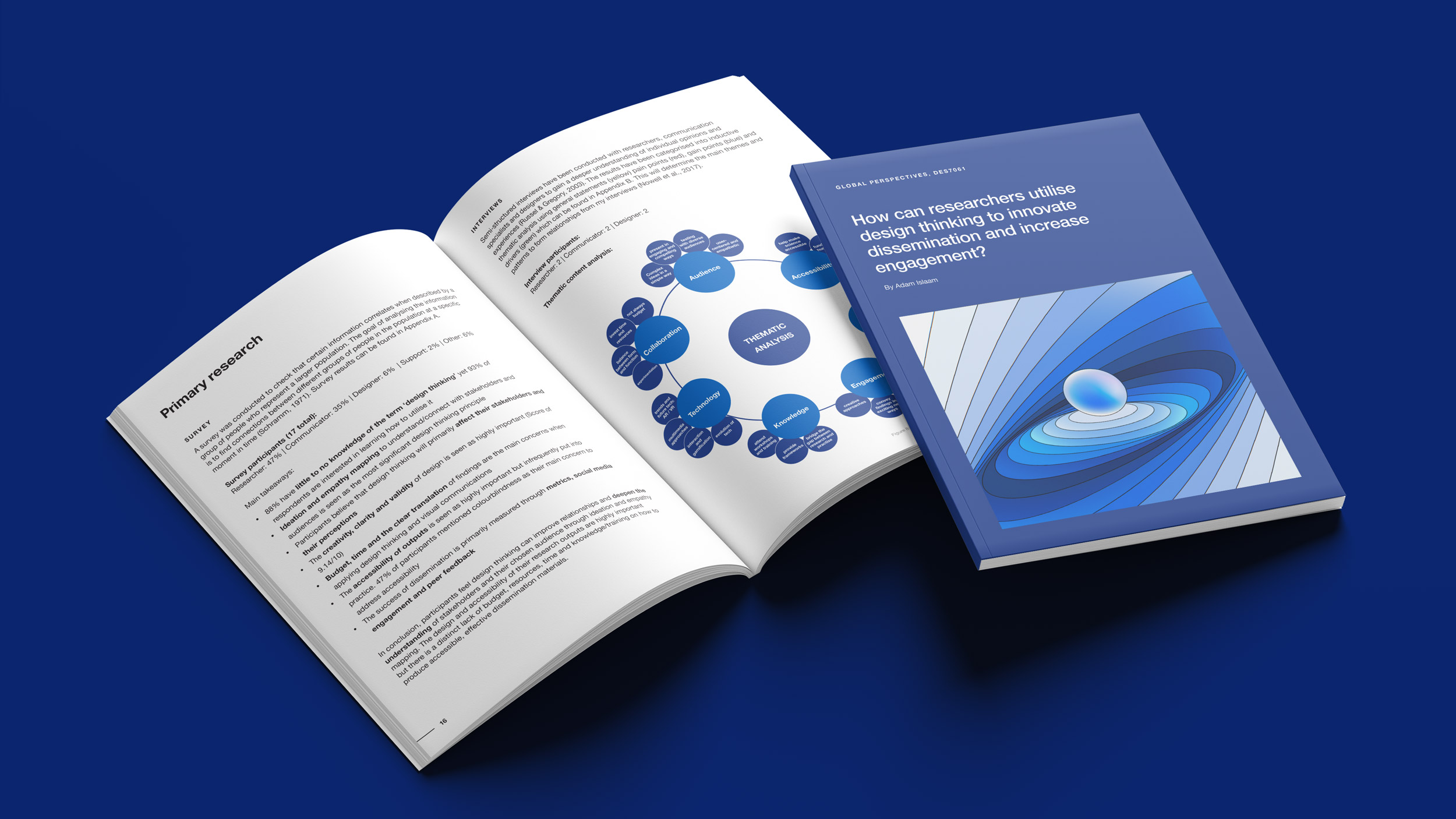
"We desperately need great communication from our scientists and engineers to change the world… if we don’t know about it, or understand it, then the work is not done."
– Melissa Marshall
TEDGlobal, Talk nerdy to me.
(01)
ABOUT THE PROJECT
Using Design Thinking to Bridge Research and Audiences
Design thinking is all about putting people first. By using this human-centered approach, researchers can better understand their audience—whether policymakers, practitioners, or the general public—and craft tailored strategies to share their findings. This leads to research that not only reaches more people but also has a greater impact.
Through its iterative and flexible process, design thinking makes complex ideas accessible and engaging, especially for non-expert audiences. It encourages researchers to think creatively, leveraging tools like infographics, animations, and videos to tell compelling stories. By involving stakeholders early on, the process ensures that the final output resonates with their needs and preferences.
This approach transforms research dissemination, turning data into clear, actionable, and visually engaging content that sparks meaningful connections and drives change.


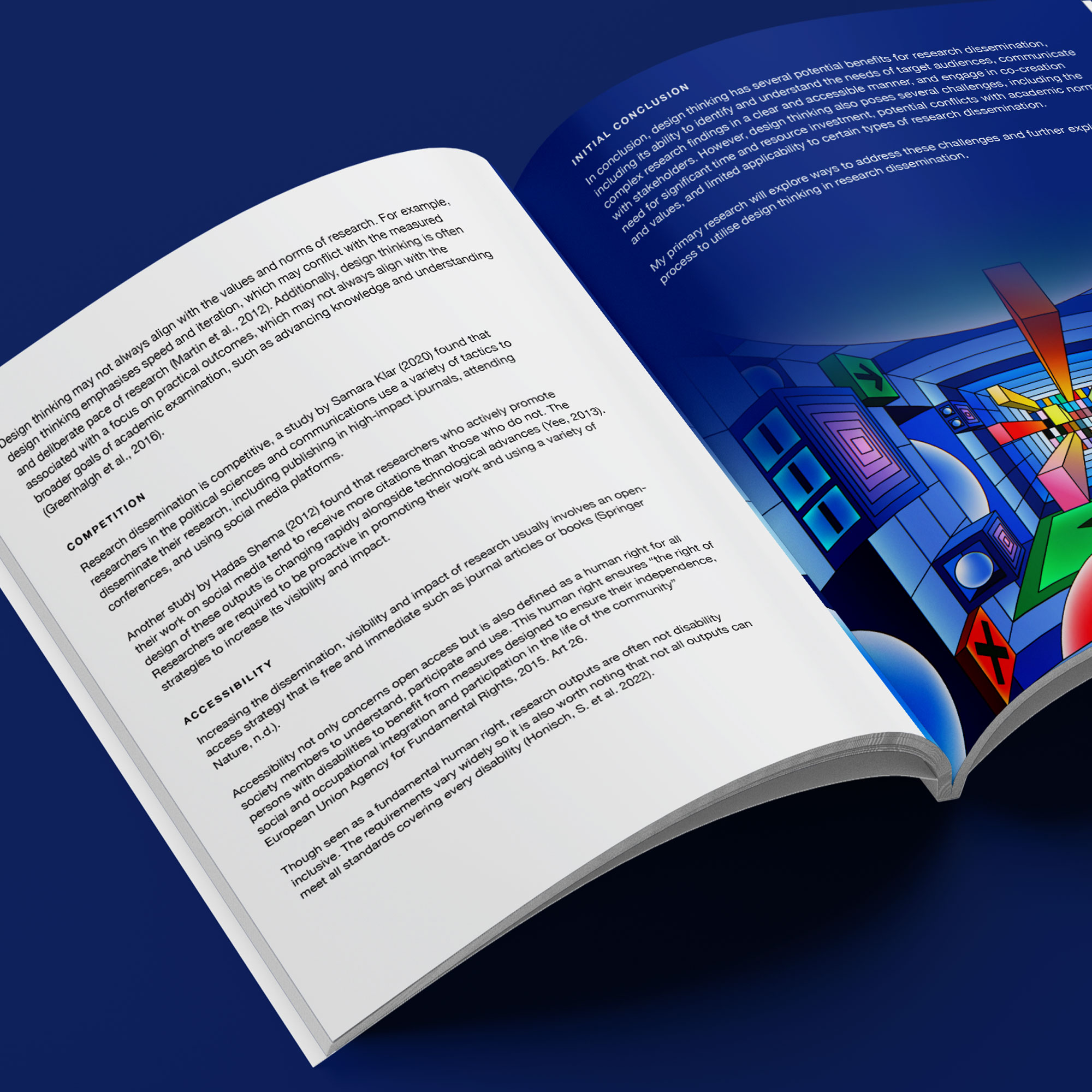
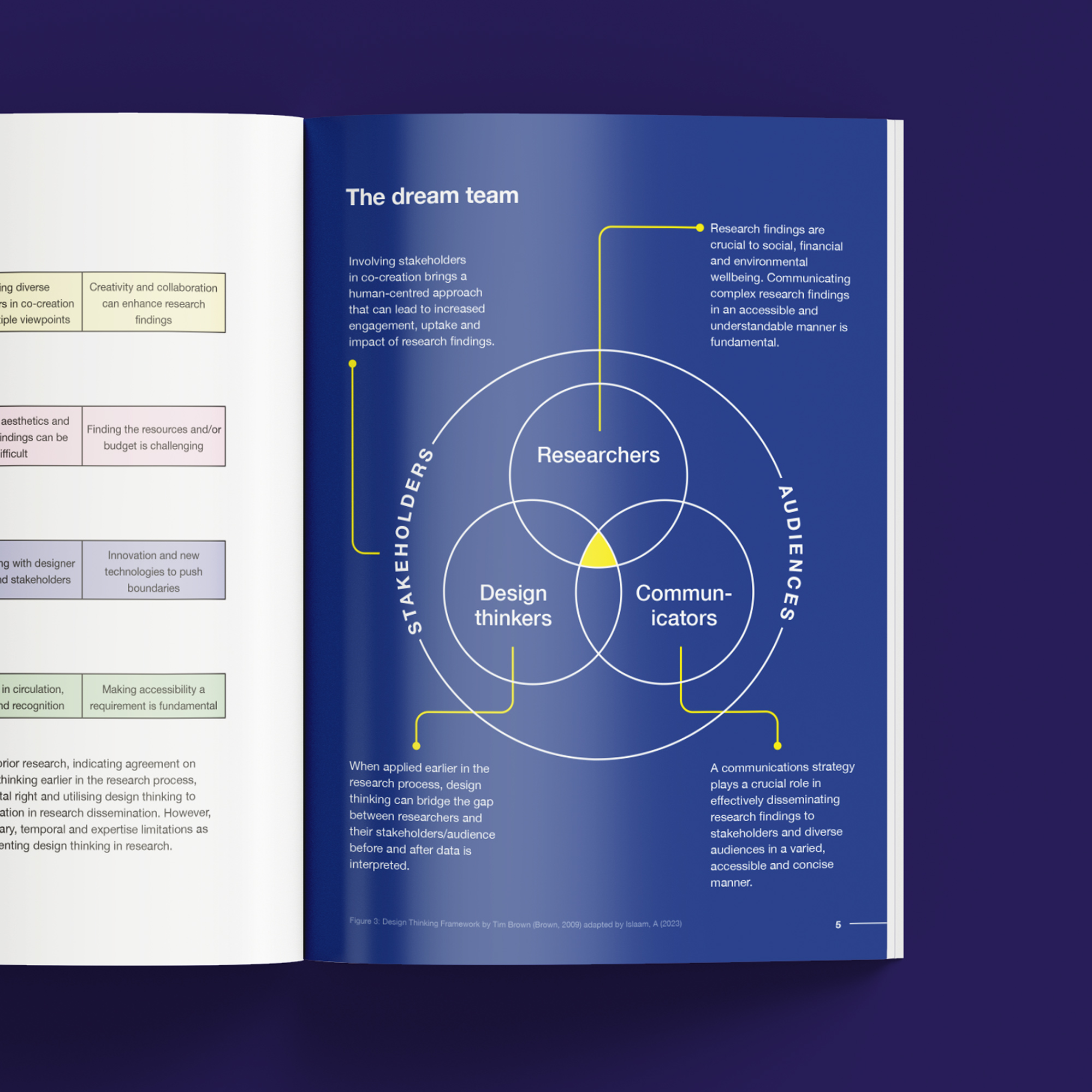

(02)
INITIAL RESULTS
Surveys, interviews, and a focus group with researchers, communicators, and designers revealed valuable insights into how design thinking can enhance research dissemination. The findings emphasise the importance of accessibility, collaboration, and creativity in making research impactful, as well as the need for training and resources to effectively apply design thinking principles.
- 88% have little to no knowledge of the term ‘design thinking’ yet 93% of respondents are interested in learning how to utilise it
- Ideation and empathy mapping to understand/connect with stakeholders and audiences is seen as the most significant design thinking principle
- Participants believe that design thinking will primarily affect their stakeholders and their perceptions
- The creativity, clarity and validity of design is seen as highly important (Score of 9.14/10)
- Budget, time and the clear translation of findings are the main concerns when applying design thinking and visual communications
- Accessibility of outputs is seen as highly important but infrequently put into practice. 47% of participants mentioned colourblindness as their main concern to address accessibility
- The success of dissemination is primarily measured through metrics, social media engagement and peer feedback
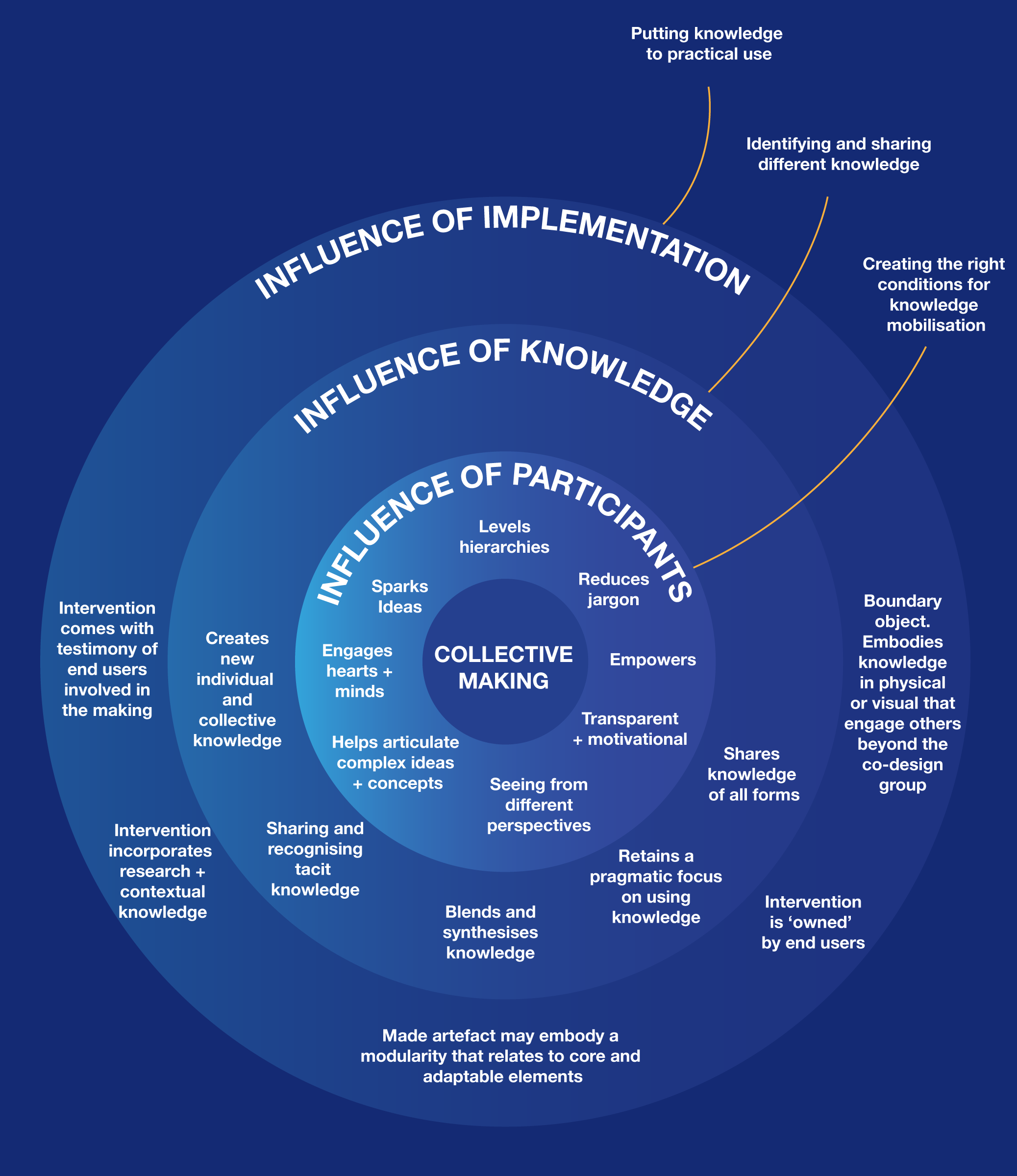
Co-creation and collective making play a vital role in building trust and fostering long-term partnerships between researchers and their stakeholders.
By bringing people together, these processes encourage knowledge sharing and help turn ideas into action. Design thinking supports this by enabling researchers to collaborate directly with their audience, involving stakeholders in the research dissemination process. This approach not only generates valuable feedback but also provides insights that can shape and improve future research projects.
(03)
RECOMMENDATIONS
Empathy mapping
Get a sense of who your stakeholders are and what they require from your findings.
User personas
Understand what your audience thinks, feels, does and says when they encounter your work. Why should they care and how can we encourage them to act?
Technology
Take advantage of new technologies such as interactive tools, gamification and augmented reality. Researchers who engage with social media receive more citations than those who do not.
Accessibility testing
Findings should be accessible to as many people as possible. Technologies that can assist in the accessibility of research findings and dissemination include but are not limited to: keyboard navigation, screen readers, low-vision features, voice input, tactile export, colour contrast, sonification, cognitive accessibility and internationalisation.
Ideation and co-creation
Collaboration with experts, stakeholders and audiences can build trust and nurture long-term partnerships. It can also increase engagement when using storytelling techniques to communicate findings. The Influence of Participants being a key structure to follow.
(04)
PROCESS
A User-Centred Approach to Research Dissemination
This flowchart illustrates the integration of design thinking within the research dissemination process, emphasising a user-centred, iterative approach.
It begins with identifying research problems and progresses through stages such as stakeholder engagement, ideation, testing, and publication. Key stages align with research, design, and communication disciplines, ensuring findings are tailored to the needs of the audience.
By incorporating co-creation workshops, accessibility testing, and diverse communication formats, this approach transforms complex data into impactful, actionable insights. The process highlights collaboration and adaptability, aiming to make research accessible, engaging, and effective in driving meaningful change.
(05)
CONCLUSION
Design thinking will continue to be crucial for research and innovation, particularly in promoting accessibility and inclusivity. Despite the challenges of limited resources, time constraints, and lack of training,
investing in education and resources can help address these barriers.
Overall, the potential benefits of design thinking in research dissemination require ongoing investment and collaboration to make it accessible to all.
